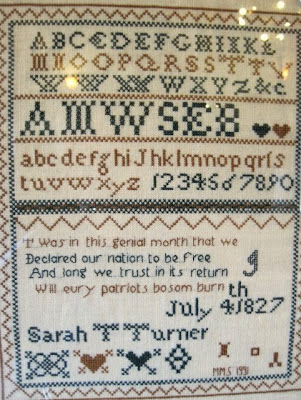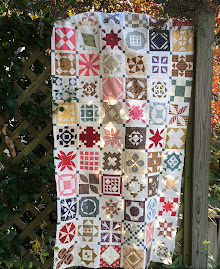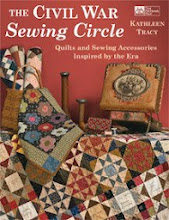A few weeks ago I visited some antique stores. There was a doll shop nearby. Like many women, I've always had a special place in my heart for dolls--particularly the dolls I played with as a child. This store had every doll you could imagine.
It's overwhelming to see all the different dolls when you first walk in. Do you see one from your childhood?
My sister loved Kewpie dolls as a child.
As I was talking to the shop manager about quilts, she asked me if I'd like to see a Civil War quilt and doll. Have you ever heard of a Topsy-Turvy doll? When I saw a reproduction of this type of doll designed by Gail Wilson a few years ago, I fell in love with it. According to Gail's website, "it's a double-ended doll. There's a black doll and a white doll on either end as it is believed that early examples were originally created during Civil War times for the children of families who often played with their slave children counterparts and so both dolls were represented and probably sewn by black slave women."
[A side note: Gail designed some of the cloth dolls that appear in my first 2 books. I tried making one myself one day but it became apparent that I should stick to making quilts . . . .]
Aren't these lovely?
According to a website on historical folk dolls, these are considered controversial dolls by some with the authentic Topsy-Turvy doll featuring a black doll with a headscarf on one end and a white doll with an antebellum-style dress on the other end. The black doll could represent a maid, slave or servant and the white doll could represent the master's child or the mistress of the house.
"The original Topsy-Turvy dolls were created before the Civil War in the Southern United States on plantations where slavery was prominent. Arguments arise as to whether the dolls were made for the slave children to play with or whether they were made for the white children who lived in the plantation house.
"With one identity on one side and an opposite identity when flipped, slave children could have played with their prohibited black doll and then flipped it to the white doll when the master was around. Others believe that the double-ended dolls were made for white children with the black doll used as a maid for their other dolls."
According to Stephanie V. Siek, this doll "was a mirror of the African-American woman's life. She took care of white children, but had children of her own -- the white child is present when the black child is invisible, the black child is present when the white child is invisible."
Kimberly Wallace-Sanders thinks that Topsy-Turvy dolls were made by the black mammies to represent the two categories of children they took care of: the white master's children verses their own. After the Civil War, the white side of the doll was identified as that of a child, while the black doll suggested the black mammy caretaker.
It's interesting to think about the connection between dolls and quilts from the past--there's so much we really don't know. I'll tell you all about MY favorite collectible doll in a week or two. It's from the more recent past, but there's been a lot of controversy surrounding this one too!


































































